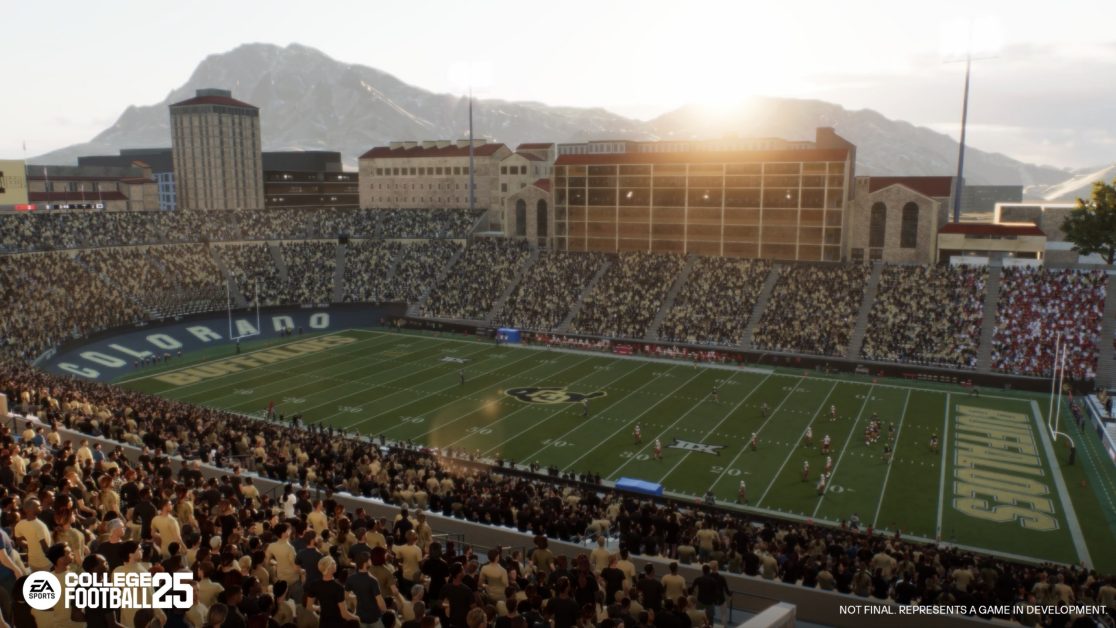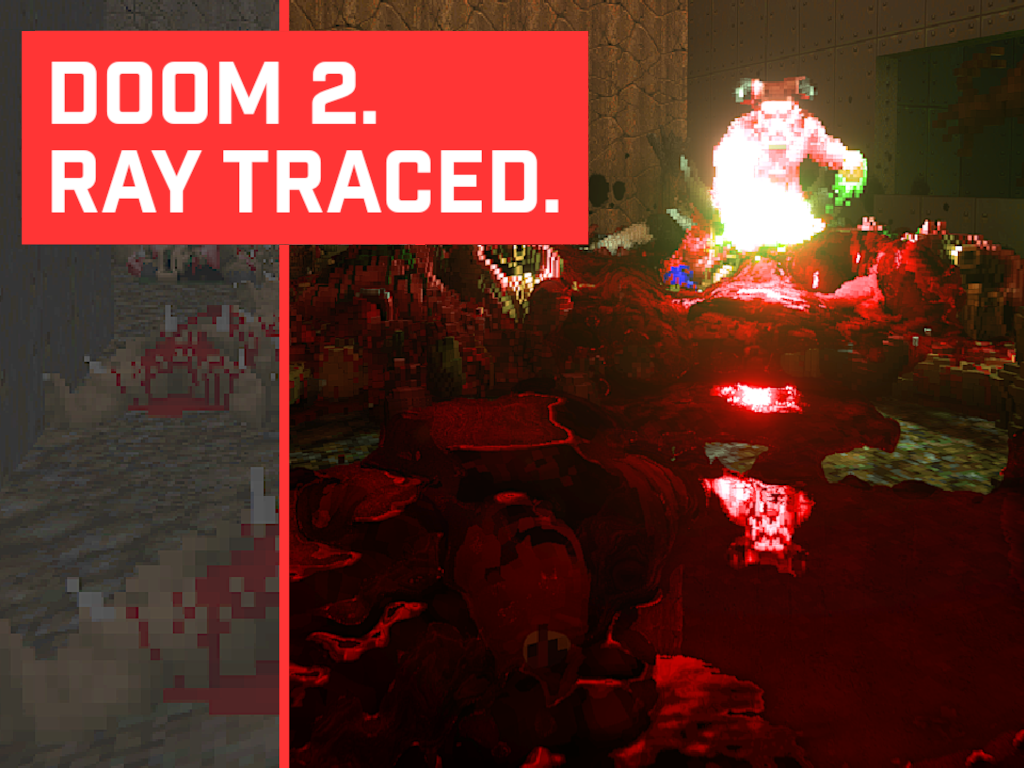You are using an out of date browser. It may not display this or other websites correctly.
You should upgrade or use an alternative browser.
You should upgrade or use an alternative browser.
The Complete List of PC Ray Traced Titles with Classification
- Thread starter DavidGraham
- Start date
DavidGraham
Veteran
Madden 25 will support ray traced ambient occlusion on Frostbite engine.
Also Frostbite engine will now incorporate ray traced global illumination relying on GIBS (Global Illumination Based on Surfels).
The work transitioned into productization via a partnership with Frostbite and was shown at SIGGRAPH 2021 branded as GIBS. Engineers on the SEED and Frostbite teams first prototyped a real-time solution for global illumination that would leverage the capabilities of new ray-tracing hardware.
“Through the exceptionally close collaboration between our rendering engineers and the Frostbite and SEED teams, we advanced GIBS performance to achieve our target of 60 frames per second across target platforms such as PS5, XBSX, and XBSS.” – Ishaan Singh (Technical Director - Rendering, College Football).

 www.ea.com
www.ea.com
Also Frostbite engine will now incorporate ray traced global illumination relying on GIBS (Global Illumination Based on Surfels).
The work transitioned into productization via a partnership with Frostbite and was shown at SIGGRAPH 2021 branded as GIBS. Engineers on the SEED and Frostbite teams first prototyped a real-time solution for global illumination that would leverage the capabilities of new ray-tracing hardware.
“Through the exceptionally close collaboration between our rendering engineers and the Frostbite and SEED teams, we advanced GIBS performance to achieve our target of 60 frames per second across target platforms such as PS5, XBSX, and XBSS.” – Ishaan Singh (Technical Director - Rendering, College Football).

GIBS Lighting Technology in EA SPORTS™ College Football 25
Global Illumination Based on Surfels (GIBS) is innovative EA technology. See how it leverages ray tracing and lights up EA SPORTS™ College Football 25.
Last edited:
DavidGraham
Veteran
Delta Force Hawk Ops supports ray traced reflections on Unreal Engine 5.
Chuck Norris made me hope it's somehow related to the movie. It's not.Delta Force Hawk Ops supports ray traced reflections on Unreal Engine 5.
GhostofWar
Regular
I'v had a chance to play the alpha and the RT reflections don't seem to apply to the large bodies of water or diffuse reflections on any kind of shiny/polished metals. I've only played 2 rush style maps and the tarkov mode map and the campaign is not playable so maybe the singleplayer at release will be where they dial it up. BF5's RT Reflections were a bit more impactful from what i've experienced so far, but it's better than nothing.Delta Force Hawk Ops supports ray traced reflections on Unreal Engine 5.
edit: I should probably say it was hard to really examine this properly at the moment, standing still trying to look at things and change graphic settings was often cut short with being killed in seconds.
Doom 2 Ray Traced

 www.moddb.com
www.moddb.com

Doom 2: RAY TRACED mod
Global illumination. Shadows. Reflections-Refractions. Fluid-simulated blood. Voxels. And entirely redone lighting in each DOOM II map.
DavidGraham
Veteran
More details on the path tracing of Black Myth Wukong, the global illumination is full resolution with 2 bounces. Reflections are also full resolution and includes particles using a new ray tracing technique.
Some comparisons are also released.

Black Myth: Wukong uses a new technique to render order-independent transparencies for large sprite sets using two-level ray tracing, which efficiently renders the game's particle system in real-time reflections
Some comparisons are also released.

Black Myth: Wukong Out Now With Full Ray Tracing & DLSS 3 - Get The Definitive Experience On GeForce RTX 40 Series GPUs
Learn all about the tech in the stunning new game, see how DLSS 3 accelerates performance on GeForce RTX 40 Series GPUs, check out new RTX ON-OFF comparison videos and screenshots, and put your system to the test with the Black Myth: Wukong benchmark.
www.nvidia.com
DavidGraham
Veteran
Neo Berlin 2087 looks to have ray traced reflections (timestamped) on Unreal Engine 5. Launching on PS5 and PC soon.
DavidGraham
Veteran
Star Wars Outlaws RTX trailer is here with some comparisons, Ray Reconstruction and RTXDI make a big difference.
Ray reconstruction is DLSS with a G-buffer input instead of the standard shaded TAA input?
Nvidia describes it as an ML denoiser that “recognizes” raytraced effects and cleans them up more effectively than hand coded denoisers. Haven’t seen any mention of different inputs.
Nvidia marketing going above and beyond as usual.
Upscaling = super resolution
Denoising = ray reconstruction
DegustatoR
Legend
Ray Reconstruction does super resolution as well as denoising.Denoising = ray reconstruction
Ray Reconstruction does super resolution as well as denoising.
Meaning a denoised half resolution RT reflection will be upscaled to full resolution? How's that different to DLSS.
GhostofWar
Regular
Not sure if this has the info you want but it's about as much as the public has ever been told.Ray reconstruction is DLSS with a G-buffer input instead of the standard shaded TAA input?
Well that pretty much confirms they pass some type of G-buffer. They show passing the normal, but that doesn't seem that important to me ... base colour seems most important to me.
I'm going to guess they just shade with non denoised RTAO/reflections/GI/etc, then pass DLSS the base colour on top of the noisy soup (and the rest of the standard TAA inputs and perhaps normal since it's in the video). The neural network can work backwards from the base colour and shaded colour to guess at most of the inputs of shading to denoise them, letting them avoid having to do denoising of shading parameters and spatiotemporal upscaling in two separate stages with shading in between.
I'm going to guess they just shade with non denoised RTAO/reflections/GI/etc, then pass DLSS the base colour on top of the noisy soup (and the rest of the standard TAA inputs and perhaps normal since it's in the video). The neural network can work backwards from the base colour and shaded colour to guess at most of the inputs of shading to denoise them, letting them avoid having to do denoising of shading parameters and spatiotemporal upscaling in two separate stages with shading in between.
Last edited:
DavidGraham
Veteran
Incredible Cyberpunk 2077 mods with path tracing.
DegustatoR
Legend
Yes but it also upscales the whole frame, not just RT reflections (or shadows). The DLSS RR component completely takes over the older DLSS SR one. So it's not just a denoiser, it's an upscaler+denoiser.Meaning a denoised half resolution RT reflection will be upscaled to full resolution? How's that different to DLSS.
For which it needs more data, because you really don't want to just give it the noisy sampled image. Want to make it easy for the filter to distinguish the diffuse GI sampling noise from texture and reflection/specular effects. I wonder to what extent the buffer format passed to DLSS will be open and patent unencumbered.
raytracingfan
Newcomer
DLSS 3.5 also takes normal vectors. I don't think the original Super Resolution did.Nvidia describes it as an ML denoiser that “recognizes” raytraced effects and cleans them up more effectively than hand coded denoisers. Haven’t seen any mention of different inputs.
Nvidia marketing going above and beyond as usual.
Upscaling = super resolution
Denoising = ray reconstruction
View attachment 11893
Similar threads
- Replies
- 1
- Views
- 225
- Replies
- 28
- Views
- 3K
- Replies
- 2
- Views
- 2K
- Replies
- 21
- Views
- 10K
